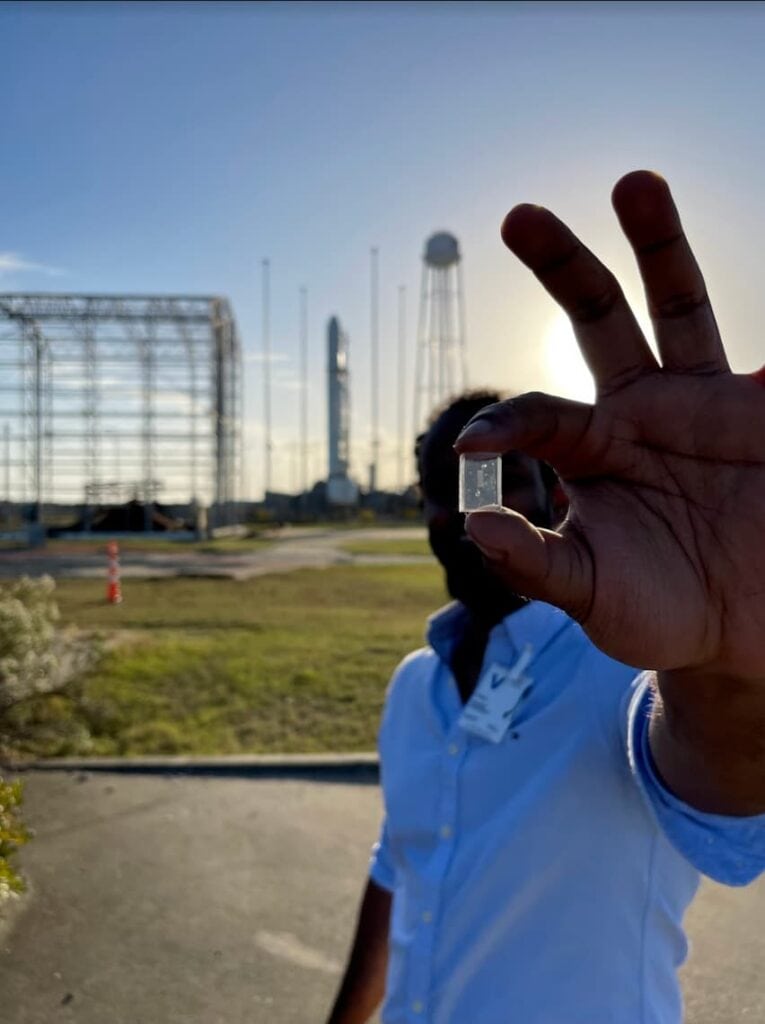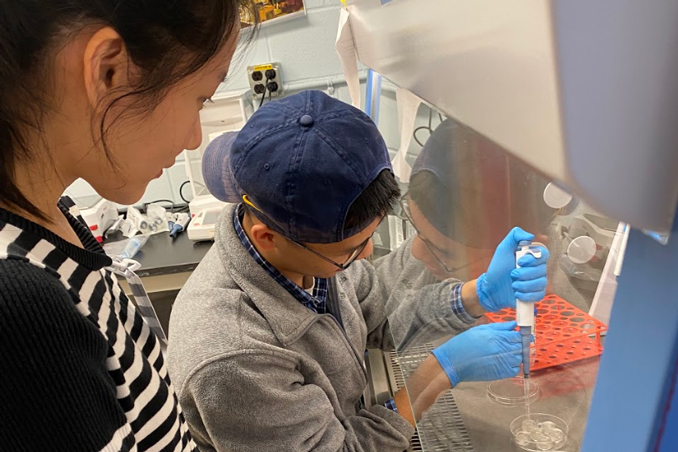
Gravity’s impact on bone cells—experiments heading to the International Space Station
Mechanical engineers at the University of Michigan are tackling mysteries of bone density loss in space and on Earth.

Mechanical engineers at the University of Michigan are tackling mysteries of bone density loss in space and on Earth.
Early this morning, a pair of experiments exploring bone density, designed by engineers at the University of Michigan, left the Wallops Island, Virginia launchpad aboard a Northrop Grumman Corp. Antares rocket for the International Space Station (ISS).
Allen Liu, U-M associate professor of mechanical engineering, and members of his research team detail how experiments in space can shed light on osteoporosis, a condition affecting hundreds of millions of people around the world—as well as how to keep astronauts safer.
Allen Liu: Osteoporosis causes bones to become weak and brittle as individuals age, causing fractures even with only mild stresses and falls. An estimated 10 million cases exist in the U.S. with another 43 million showing signs of low bone density.
A weightless environment, or microgravity, can cause physiological changes in bones, and it presents a unique research environment without the typical mechanical stresses of gravity. It also quickly alters how cells grow and function without the use of drugs or genetic engineering.
The stiffness of a cell can tell us its biological age, predicting how it may decline in function or its susceptibility to chronic disease over time. We’re testing the hypothesis that when cells aren’t pushing back against gravity, that reduction in stiffness makes them susceptible to the same type of changes we see in osteoporosis. But we also think we can prevent those health impacts by mechanically compressing cells in a way that mimics gravity.

Nadab Wubshet, doctoral student in mechanical engineering: We hypothesize that the absence of gravity may induce softening in the cells, which could be behind bone loss seen in astronauts after long stays on the ISS. Astronauts do resistance exercises onboard to create the compression effect that is absent without gravity.
To test cell stiffness on the ISS, we use an automated microfluidic device that uses fluids to trap single cells and slowly raise the pressure on each cell to induce deformation. Fluorescent markers allow us to see its shape at each pressure level. Our device is also integrated into a system that takes snapshots and videos that let us collect data to measure stiffness of the cell.
Wubshet: If our hypothesis is proven right, our results will provide great insight into how changes in physical forces like gravity affect the mechanical characteristics of bone cells—and bone formation. Having a better understanding of the impact of native forces such as gravity on bone formation could provide insights on better diagnostics and treatments for people dealing with bone decay.
But the applications in space are also important, especially considering growing interest in space exploration that could have astronauts in microgravity for longer periods of time. We hope to develop solutions for maintaining bone density for those astronauts.
Grace Cai, doctoral student in applied physics: The cells we’ve been referring to as “bone cells” are osteoblasts, which deposit minerals and proteins to build bone when and where it’s most needed. In our study, we investigate how microgravity affects osteoblast activity.
Cells in microgravity experience low cell tension, and we can increase cell tension by applying mechanical compression. By placing spherical clumps of human osteoblast cells in zero gravity and applying compression, we can test if it promotes bone cell development and maintenance, while preventing bone loss.
Cai: Whereas the first experiment will be handled at the ISS, samples for this second experiment will be returned to Earth on SpaceX CRS-26 in January for analysis. Our findings here should shed light on whether compressive space suits and clothing could prevent bone loss and improve the bone health of astronauts exposed to microgravity conditions. These kinds of technologies could help protect crews traveling to and from the ISS, as well as to other destinations.
In addition to informing osteoporosis research on Earth, we anticipate that our findings will likely be relevant to other age-related diseases and cancers. Cell mechanics and the architectures that cells build, which are of fundamental importance to our own study, are significant in these areas too.

Liu: One challenge with working in a microgravity environment is that everything is weightless, so handling fluid becomes extremely challenging. Everything has to be closed and our cells must be kept in a bag instead of on a Petri dish. And because space is at a premium on ISS, each experiment is packaged into a small CubeLab container, about 6.3″ tall, 8.2″ long and 12.3″ wide.
As a researcher, I think we are accustomed to uncertainties, but this is very different. Lots of things can go wrong with an experiment on Earth, and it makes it even more challenging to get the experiment right in space. We are hopeful that the experiments will go smoothly, and I am just glad that we made the flight!
The study is funded by the National Science Foundation and sponsored by the ISS National Laboratory, in collaboration with Space Tango.